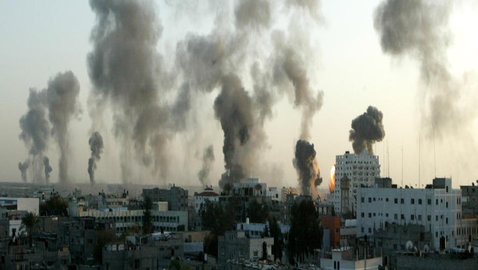Fascinating, Horrifying, Bizarre Use of Media Gave Uninhibited Exposure To Gaza War
Post Views 1
For every second of those eight days, the media beamed the mayhem, the blasts, the tragedies, as they unfolded into our homes giving, as it were, the carte blanche to journalists, cameramen, reporters and other media personnel to bring the war to the world as they thought fit – unrestricted, unrestrained and uninhibited.
Four years ago, when Israel had launched an aerial bombardment, which lasted three weeks and killed almost 1500 Palestinians, the Israeli military banned foreign journalists from entering Gaza. This time it is not the same. Short of welcoming them with garlands, they have been allowed unrestricted access to wherever they want to be.
Media people from all over the world have flooded Gaza. The change is truly significant. Apart from the professional media, private citizens also shot scene with their mobile cameras and cameras and uploaded them on social media sites like Twitter, Reddit, Facebook and Google.
Journalists reported every major strike within minutes of its occurrence, adding perspectives and opinions and providing details the moment they were available.
Within seconds of the strike on a media center in Gaza City, BBC Middle East bureau chief Paul Danahar tweeted that the building had been struck and that he was standing in front of it and that it was on fire and smoke was billowing out of it.
Almost immediately NBC News chief foreign correspondent Richard Engel tweeted a photo of the center in flames along with more details. CNN senior international correspondent Arwa Damon completed the missing angle, reporting that there was one fatality and five others had been injured.
Such a strike four years ago, would have hardly received such extensive coverage, with reporters stationed miles away from the scene of action they would have to rely on Gaza sources to find out what happened and their version of the story would have served their interests and may not have been as truthful or accurate.
The media was also effectively used by both warring groups, both Israel and Hamas, to talk about the battle and tell the world what the other was doing wrong, mixing their confrontation updates with threats and warnings.
Some of the tweets were very creative and one from a Hamas loyal was particularly thought provoking, it showed rockets showering down on the Eiffel Tower, the Statue of Liberty and the Big Ben, with a simple query, “What Would You Do?” Another tweet showed the Israeli Prime Minister Benjamin Netanyahu blasted into space atop a Hamas rocket.
Even though it is hard to change preconceived images and perceptions through propaganda but the images of Israel providing food and medical services to Gaza civilians, did not fail to strike a chord in those who saw them.
Analysts say that the use of social media allowed the affected to circumvent a partisan and biased media, and allowed them to interact with people directly.
Today’s generation understand the language of Twitter and Facebook better than anything else and the war and its activities became virtual fodder for the internet. It recognizes the power of the social media and how it can either quash or incite violent movements anywhere in the world.
The extensive and unabashed use of media has drawn criticism and praise alike. Those in opposition to it feel that it trivializes a serious issue and belittles it tragic consequences, those in favor say, you cannot arrest technology, there’s no point in saying it should not be done, because no one is going to listen – if it serves their self-interest they will go ahead with it, public-opinion be damned.
Looking for Media jobs? Click here.
Fascinating, Horrifying, Bizarre Use of Media Gave Uninhibited Exposure To Gaza War by Harrison Barnes


 What Do You Think of Hillary’s Campaign Logo?
What Do You Think of Hillary’s Campaign Logo?